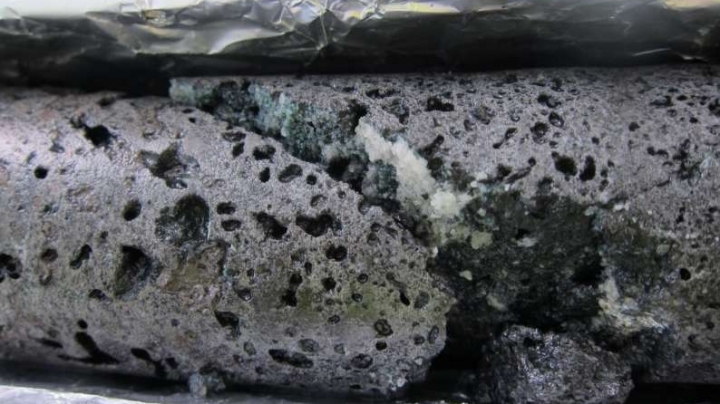Science premiere! Island's engineers turn carbon dioxide into stone

Scientists and engineers working at a major power plant in Iceland have shown for the first time that carbon dioxide emissions can be pumped into the earth and changed chemically to a solid within months—radically faster than anyone had predicted.
The finding may help address a fear that so far has plagued the idea of capturing and storing CO2 underground: that emissions could seep back into the air or even explode out. A study describing the method appears this week in the leading journal Science.
The Hellisheidi power plant is the world's largest geothermal facility; it and a companion plant provide the energy for Iceland's capital, Reykjavik, plus power for industry, by pumping up volcanically heated water to run turbines.
But the process is not completely clean; it also brings up volcanic gases, including carbon dioxide and nasty-smelling hydrogen sulfide.
Under a pilot project called Carbfix, started in 2012, the plant began mixing the gases with the water pumped from below and reinjecting the solution into the volcanic basalt below. In nature, when basalt is exposed to carbon dioxide and water, a series of natural chemical reactions takes place, and the carbon precipitates out into a whitish, chalky mineral.
But no one knew how fast this might happen if the process were harnessed for carbon storage. Previous studies have estimated that in most rocks, it would take hundreds or even thousands of years. In the basalt below Hellisheidi, 95 percent of the injected carbon was solidified within less than two years.